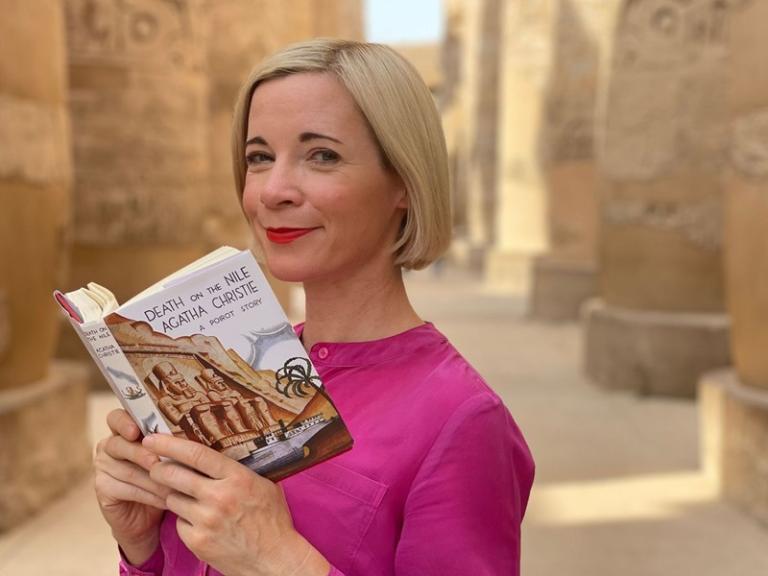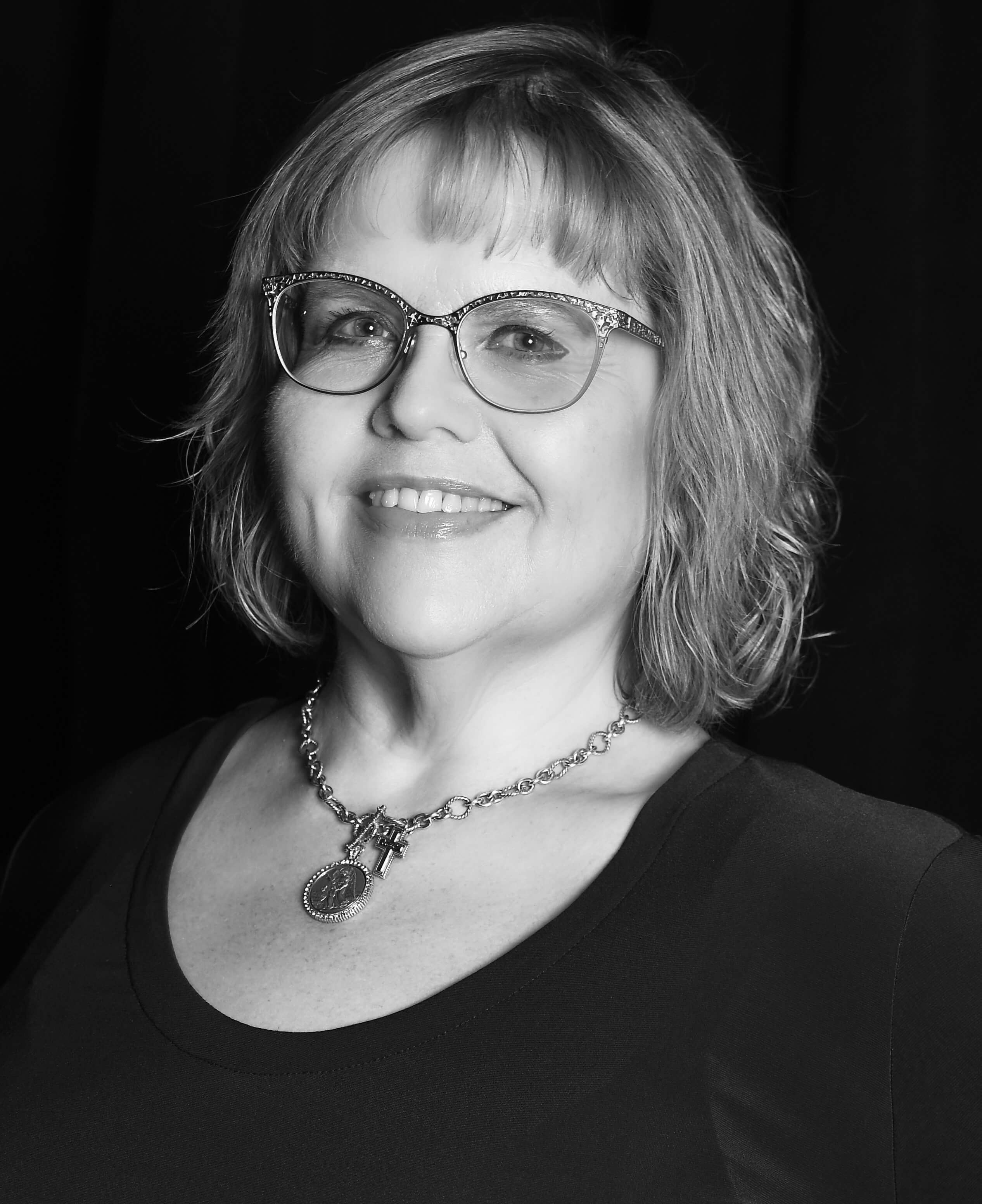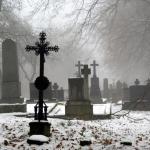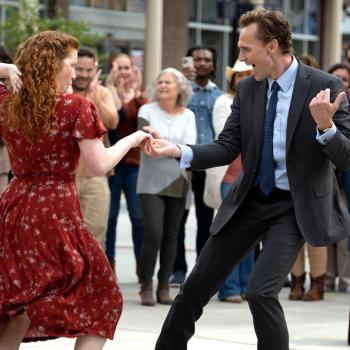
Agatha Christie is a queen of mystery, and not just on the page.
Starting Dec. 3 on PBS, the three-episode series Agatha Christie: Lucy Worsley on the Mystery Queen begins a fresh examination of the novelist, born on Sept. 15, 1890.
If you missed any episodes, you can watch them at PBS.org through the end of the month.
Lucy Worsley Unravels the Christie Mystery
A video companion to British historian Worsley’s 2022 book Agatha Christie: An Elusive Woman, it covers the usual subjects: Christie’s (somewhat) privileged childhood; her first marriage to dashing aviator Archie Christie; her divorce and subsequent disappearance; and her later passions, both for archaeology and for much-younger archaeologist Max Mallowan, her second husband.
As in her earlier documentaries, Worsley is an amusing, winsome guide. She details Christie’s upper-middle-class upbringing and her bargain society debut in Cairo (owing to her father’s financial downfall, due in part to overspending).
Then she moves on to Christie’s experiences as a nurse and pharmacy assistant during World War I (good way to learn about poison), and her 1914 marriage to the dashing Archie (whom Worsley describes as “hot”).
Through the creation of the persnickety, mustachioed Belgian detective Hercule Poirot — a Catholic — Christie became a celebrated novelist and a major celebrity in 1920s Britain.
The Mystery Queen’s Own Mystery
But, her mother’s death and Archie’s infidelity — he left Agatha for a younger woman, a friend of the family — sent Christie into the most mysterious part of her real life.
In late 1926, she left her young daughter Rosalind with maids and vanished for 11 days.
She subsequently turned up at a health-oriented hotel, under a fictitious identity — which included the last name of her husband’s mistress.
As recounted by Worsley, the mystery novelist became a mystery, the details of which are disputed to this day.
Enter Miss Marple … and Mr. Mallowan
Later, as a divorcee, Christie created detective Miss Marple, a 60-something, never-married woman with an unprepossessing, easily overlooked demeanor. But, like Poirot, she had a keen eye for detail and a deep understanding of human nature.
Having spent time in the Middle East earlier in her life, Christie developed a fascination with archaeological research in the region, and had the money to indulge it.
Along the way, the 40-year-old Christie met 26-year-old Max Mallowan, a Catholic. They eventually married and stayed wed until Christie’s death in 1976.
What Worsley Misses About Agatha Christie
While Worsley has dealt with subjects of faith in the past in a respectful way (like her examination of Tudor Christmas customs), she’s not particularly religious herself.
So, she doesn’t lean much into exploring Christie’s own faith — in print or on TV. But that doesn’t mean there isn’t anything there.
Born into the Church of England, Christie was an observant High Anglican, and Christian values found their way into her work.
At the Anglican/Episcopalian site The Living Church, journalist and retired Episcopalian priest Rev. Leonard Freeman wrote:
Agatha Christie, a lifelong member of the Church of England, kept her mother’s copy of The Imitation of Christ on her bedside throughout her life. That image provides an important clue to why her mysteries were so appealing and challenging. Her Christian presuppositions shaped the elements that made her mysteries different from the run of the mill, her work touching something significant in the public soul. …
The theology of Dame Agatha’s books is essentially Christian, with a deep sense of the wickedness and corruptibility of human nature. But she’s not cynical and despairing. She holds love, moral character, choice, and justice out as the instances for at least temporary deliverance from the clutch of original sin. It’s a taste within this life of what life can be like within a world innately connected to a larger moral arc.
Judging Christie Through a Modern Lens
Worsley does bring a modern eye to the life of a writer born during the reign of Queen Victoria. She recounts the familiar refrain of how society held Christie, a woman, back (though Christie doesn’t seem to have felt that way about herself).
The historian also examines some of the societal attitudes and prejudices present in Christie’s work, which would have been mainstream — especially among Britain’s upper class — at the time they were written.
Recently, publisher HarperCollins even reworked some of Christie’s books to remove racial references and other language considered offensive by today’s standards.
Christie the Christian
But, like many people, Christie was not perfect in her faith observance. In 1930, when she married Mallowan, the Anglican Church didn’t condone the remarriage of divorced persons whose spouse was still alive — and neither did (nor does) Mallowan’s own Catholic Church.
The ceremony was held at St. Cuthbert’s Church in Edinburgh, part of the Church of Scotland, which doesn’t consider marriage to be a sacrament.
But that doesn’t mean that Christie entirely rejected her faith.
From First Things:
Agatha Christie, “like her great contemporary Dorothy Sayers” remained within the Church of England, although she never took communion as a divorcee. (Her second husband, Max Mallowan, was a Catholic who was also forbidden from taking the sacrament).
From the same piece:
Christie’s autobiography had not been published at the time of her Memorial Service, so it is uncertain whether William Collins knew of the following passage, in which Christie recounted the sudden interruption of a math lesson by her teacher:
“All of you,” she said, “every one of you—will pass through a time when you will face despair. If you never face despair, you will never have faced, or become, a Christian, or known a Christian life. To be a Christian you must face and accept the life that Christ faced and lived; you must enjoy things as he enjoyed things; be as happy as he was at the marriage at Cana, know the peace and happiness that it means to be at harmony with God and with God’s will. But you must also know, as he did, what it means to be alone in the Garden of Gethsemane, to feel that all your friends have forsaken you, that those you love and trust have turned away from you, and that God Himself has forsaken you. Hold on then to the belief that that is not the end. If you love, you will suffer, and if you do not love, you do not know the meaning of a Christian life . . . . ” Years later [those words] were to come back to me and give me hope at a time when despair had me in its grip.
The Agatha Christie Indult
In 1971, British notables, both Catholic and non-Catholic, signed a petition to retain celebration of the Tridentine Rite in England and Wales. The story goes that Pope Paul VI, upon seeing Christie’s name on the petition, agreed to it — giving the effort the unofficial moniker of “The Agatha Christie Indult.”
But why did she sign it? In a post at the Oxford University Press blog, Dr. David Grumett, who lectures in Christian Ethics and Practical Theology at the University of Edinburgh, writes:
Although Christie’s then husband, the archaeologist Sir Max Mallowan, was Roman Catholic, she herself wasn’t. Christie didn’t defend the old rite, nor contest the new, on the grounds that either was good or bad for the Church.
Rather, along with her fellow partners in crime, she argued that the old rite had inspired countless artistic achievements, including in poetry, philosophy, music, architecture, painting, and sculpture. These, she contended, made it a universal possession of human culture that the Church had no right to abolish.
The letter had a positive outcome, securing an indult allowing the bishops of England and Wales to authorize the continued celebration of the old rite alongside the new. In 1984, a similar permission was granted worldwide.
Seeing All of Christie
Every historian brings his or her own perspective, which affects both what’s focused on, and what’s not. Here’s to hoping that someone in the future spends as much time as Worsley in exploring, not just the facts of Christie’s life and work, but the depths of her soul.
In the meantime, we have Poirot’s Catholicism, which was referenced in Kenneth Branagh’s latest turn as the Belgian detective, A Haunting in Venice — released on Sept. 15, 2023, the 133rd anniversary of Christie’s birth.
Here’s a preview of Worsley’s profile of Christie:
Image: Lucy Worsley reads Christie at Karnak Temple, Egypt/Photo: PBS
Don’t miss a thing: Subscribe to all that I write at Authory.com/KateOHare














